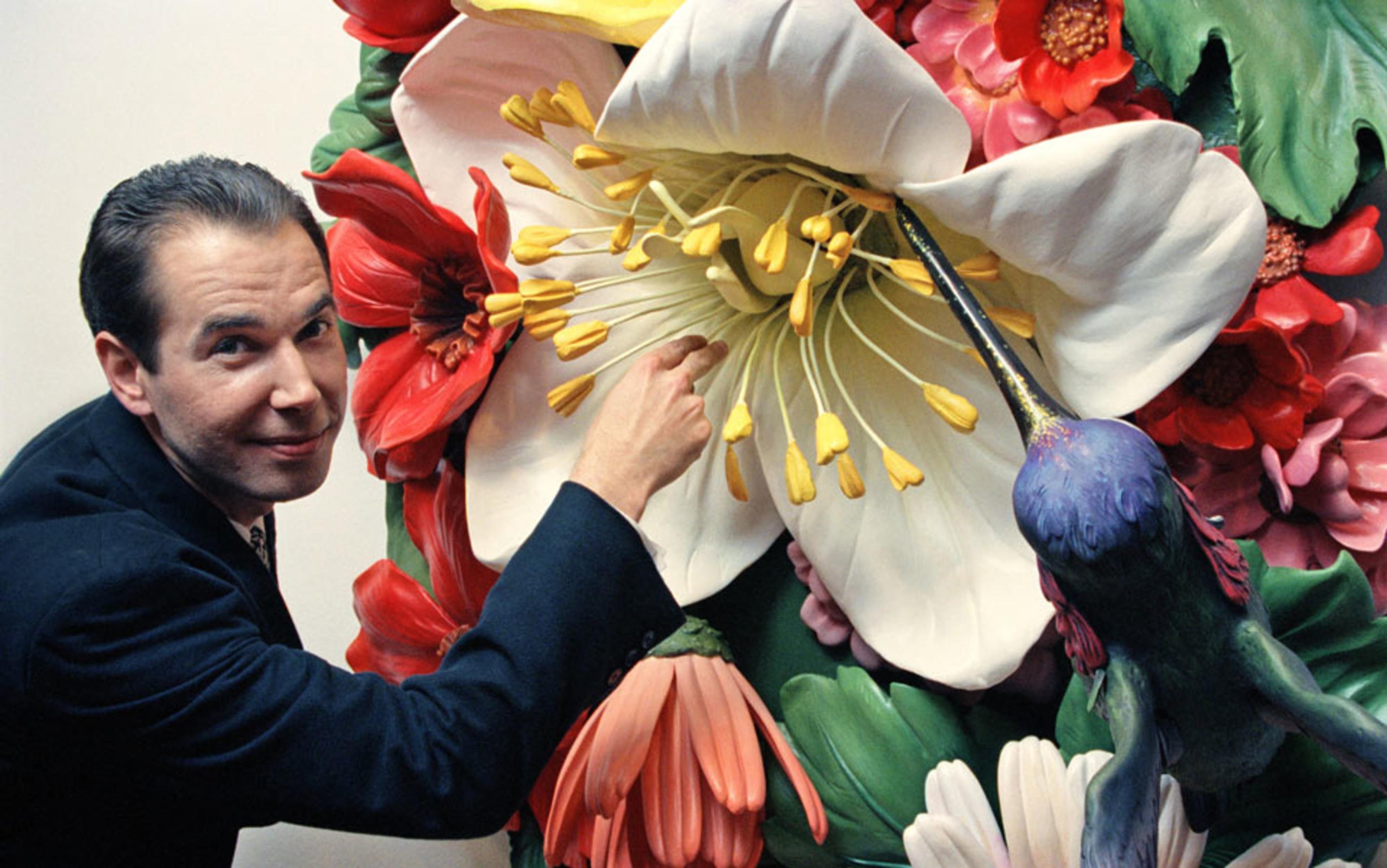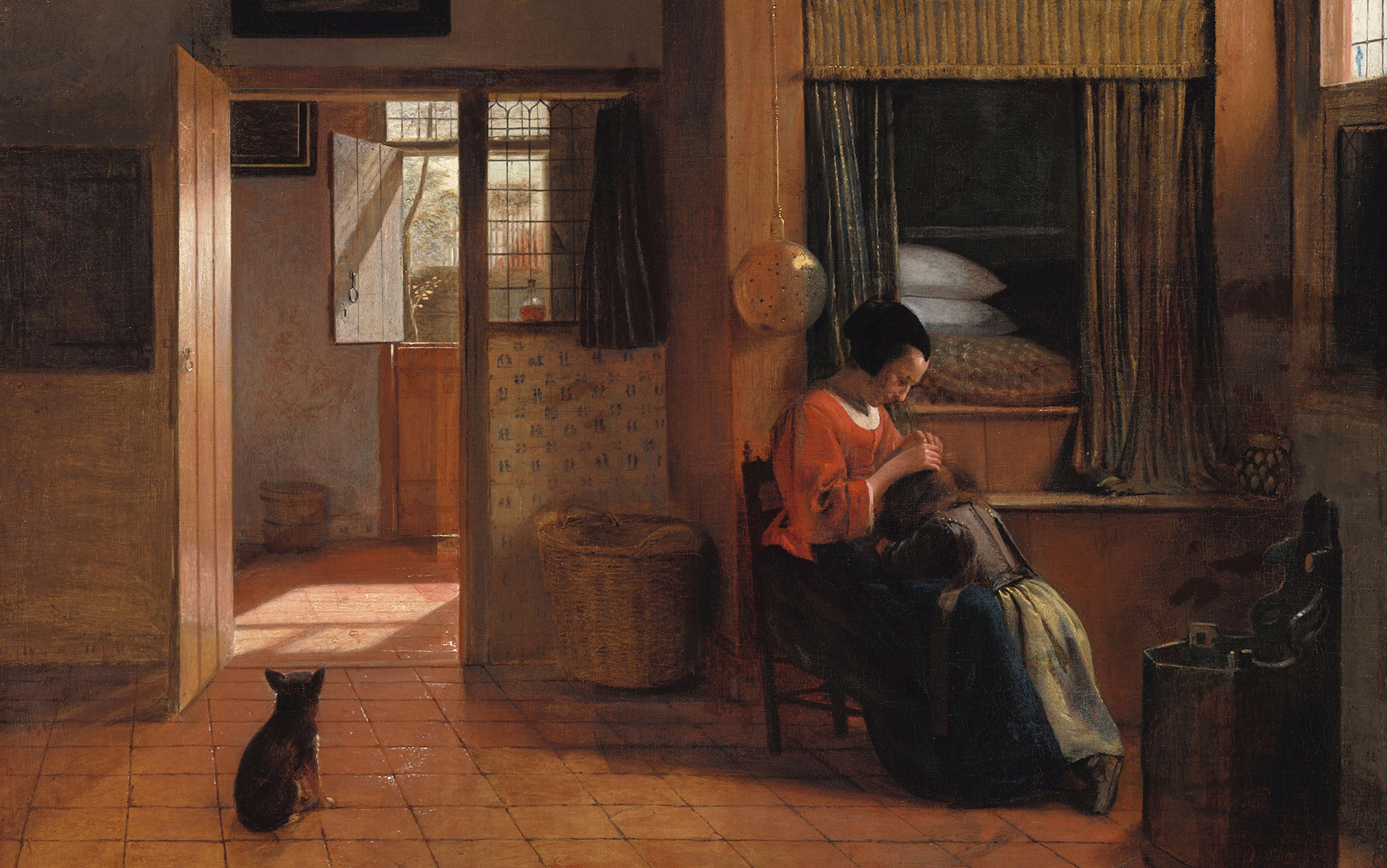Classical music and high European culture were at the heart of Theodor Adorno’s philosophy and outlook on life. He was born in 1903 in Frankfurt in Germany, and grew up with music, both as a listener and a practitioner: his mother, Maria Calvelli-Adorno, was a singer, and the young Adorno was a talented pianist. He attended the Hoch Conservatory, going on to study with the Austrian composer Alban Berg. Adorno chose a career as a professional philosopher taking a position at the University of Frankfurt in 1931, but music and culture remained the focus of his interests.
Adorno insisted on high standards – culture was not merely a matter of technical progress (in composing more beautiful, more complicated music, for example) but also (if indirectly) a matter of morality. Music, like all culture, could either develop or obstruct social progress towards greater freedom. And that progress was under threat. Even in pre-war Vienna, Adorno saw warning signs of a collapse in European culture. He would later write of Igor Stravinsky’s Rite of Spring, which premiered in 1913, that it represented an ‘uproar of culture against its own essence as culture’ which is ‘enjoyed as an enticement precisely in its opposition to civilisation’. The ballet’s ‘flirtation with barbarism’ was not merely musical – it reflected social facts, and indeed showed evidence of a kind of cultural trend towards regression, and of the domination of the individual by the social whole.
These trends towards regression and domination were borne out with the rise of Nazism. Adorno’s father, Oscar Wiesengrund, was Jewish, and Adorno’s licence to teach was revoked by the Nazis in 1933, leading him to spend four years at Oxford studying for a doctorate under the philosopher Gilbert Ryle.
Together with the Institute for Social Research in Frankfurt, Adorno emigrated to the United States, eventually settling in Los Angeles in 1941. The philosopher who had savaged Stravinsky was now brought face to face with Mickey Mouse. In Minima Moralia (1951), Adorno wrote, despairingly: ‘Every visit to the cinema leaves me, against all my vigilance, stupider and worse.’
Like many émigrés, Adorno was initially disoriented by US mass culture, which had not yet overrun Europe as it would after the war. This disorientation became a principled distrust. He claimed that capitalist popular culture – jazz, cinema, pop songs, and so on – manipulates us into living lives empty of true freedom, and serves only to distort our desires. Popular culture is not the spontaneous expression of the people, but a profit-driven industry – it robs us of our freedom and bends us to conform to its needs for profit.
This distrust of US culture was reciprocal. Both Adorno and his philosophical collaborator Max Horkheimer were broadly Marxist, and were promptly placed under surveillance by the FBI. Their telegrams were intercepted, and one of Adorno’s co-authors, Hanns Eisler, was called before the House Un-American Activities Committee in 1947, and deported in 1948.
The FBI distrusted Adorno as a transplant from a Marxist background into a capitalist one. Now, people distrust him as a transplant from a privileged background into a progressive one. The easy response to Adorno’s condemnation of popular culture is to dismiss Adorno as a snob. His dislike of mass culture becomes simply a dislike of the masses that he looked down upon. He seems patronising, seeing people as easily fooled and mislead, and popular culture as shallow and manipulative. In this version, Adorno’s arguments against popular culture contain no insight, only elitism, while, in fact, popular culture pleases and gives a voice to ordinary people.
But this easy response is misguided. Adorno did not simply condemn popular culture; nor did he simply yearn for the rule of high culture. He found grave problems with both – and these problems stem from Adorno’s profound respect and demand for pleasure, driven by a strong moral concern for our wellbeing. Strange as it might seem, Adorno’s broadsides against popular culture are driven by the desire to identify and avoid harms to our flourishing. Popular culture is not only bad art (though it is that, he claims) but harmful art – it stands in the way of true freedom.
To get at this moral position, we might consider a familiar example: ‘guilty pleasures’. We are now, on average, working longer, with less security, for less money. The world is riddled with social and political problems that we have no immediately clear way of engaging with or ameliorating. Our limited free time seems better spent instead on relaxing the demands we place on ourselves, and escaping the pressures of the everyday world. While guilty pleasures are imperfect, they afford us a pleasure too often lacking in our busy lives. They supposedly give us more immediate enjoyment than high art, while certainly demanding less time, attention and expense.
Adorno is no opponent of pleasure. But he would be very suspicious of ‘guilty pleasures’. What sort of a world binds guilt and pleasure together? What sort of a pleasure comes together with an awareness, no matter how dim, that things should be better? It is a world, Adorno claims, that gives us only a faint copy of pleasure disguised as the real thing; repetition disguised as escape; a brief respite from labour disguised as a luxury. Popular culture presents itself as a release of our repressed emotions and desires, and so as an increase in freedom. But in truth, it robs us of our freedom twice – both aesthetically (in failing to give aesthetic freedom in enjoying art) and morally (in blocking the path to true social freedom).
What does it mean to lack aesthetic freedom? For Adorno, this is about freedom in experiencing, interpreting and understanding artworks. This freedom requires an artwork to give us space and time to inhabit it, and to experience it as a unified whole. However, popular culture has lost its ability, Adorno claims, to create these integrated, unified wholes. Instead, works are now being produced that are a loose collection of moments experienced in a rapid and disconnected series.
It’s not uncommon to hear films praised for their ‘set-pieces’ and ‘special effects’. If we look beneath the familiarity of this language, we find strangeness – we praise a two-hour film for the enjoyable (and expensive) moments it contains: the chase sequence, the explosion, the action choreography. We are accustomed to breaking down what is presented as a single thing into a collection of disconnected smaller things. This is a claim about how we experience films – but we can find examples in how we talk about films too. For example, on the AV Club, we can see a list of the best ‘scenes’ of 2017 – a list of dismembered sequences taken from films and described in isolation. Going yet further, Variety magazine lists the top 10 ‘shots’ of 2017, or still images isolated from the films – the motion even – that lend them meaning.
We perceive the same phenomenon musically; hit songs contain ‘hooks’, catchy fragments of melody found in the chorus or bridge, which the song is designed to deliver over and over. We can immediately summon to memory the chorus from the Rolling Stones’ song ‘(I Can’t Get No) Satisfaction’ (1965), and this chorus has had a long career – used repeatedly in adverts, soundtracks and trailers. It is enjoyed in isolation, and in its own right; there are doubtless people who have never heard the full verses. The song can be decomposed without loss of meaning – its moments can be pulled out, and re-used. And the song as a whole is designed to deliver the tension and release that comes with expecting, and hearing, that same chorus yet again. For Adorno, this is a perversion of, and a block to, true aesthetic freedom – the enjoyable and free play of unifying and working together the various parts of an artwork into an integrated whole. Aesthetic experience without compromise or qualification is unpredictable, fluid, and has a complex structure sustained and developed across long stretches of time. In contrast, the culture industry trains us to focus on minute intervals of time and content, dulling our ability and willingness to experience artworks as unified, complex objects.
We know it could be better, but resolve to enjoy it anyway. For Adorno, this is what’s wrong with pop culture
It also accustoms us to a kind of aesthetic experience that is very similar to the work it is meant to release us from; a constant checking of the artwork against pre-set standards and tropes. Consider how rare it is when watching a popular film, for example, not to be aware of the function of the scene – one scene is clearly establishing relationships that will frame the events to come, another is an action scene, another gives the villain’s motivation. We are usually equipped with a subconscious understanding of the function of every scene, and indeed its expected length. When the opening scene of a film shows someone waking up in a messy bedroom, we are reasonably sure that this is our main character, and that when the alarm rings that character will wake up worried about being late for something. When James Bond visits Q, we know that the gadgets are being shown because they will be used later, so we remember them; we know the discussion will not take long, and that no deep emotional conversations will occur. And our expectations are rarely disappointed. We are put to work in organising, checking and filing the moments of the film as it passes by. Instead of being given time for consideration and interpretation, we are engaged in the very sort of classification and sorting that characterises the world of work we thought we were escaping from.
Adorno is surely right that many films are like this – their narrative follows broadly familiar paths, and the characters represent broadly familiar archetypes. But this isn’t news. We are hardly under the impression that a blockbuster movie such as The Dark Knight Rises (2012) is as good as the arthouse film Andrei Rublev (1966). We don’t expect it to be – we expect it to give us an exciting two or three hours. We don’t expect it to stand up under close scrutiny. We enjoy it for what it is – a guilty pleasure.
But the curious thing about a guilty pleasure is that it is guilty; we know that what we are doing could be better, but resolve to enjoy it anyway. Adorno sees this as the very core of what is wrong with popular culture. As far as Adorno is concerned, we are not fooled. We know exactly what we are getting, and how shoddy it is, but desire it all the same:
That is the triumph of advertising in the culture industry: the compulsive imitation by consumers of cultural commodities which, at the same time, they recognise as false.
[…]
The phrase, the world wants to be deceived, has become truer than had ever been intended. People are not only, as the saying goes, falling for the swindle; if it guarantees them even the most fleeting gratification they desire a deception which is nonetheless transparent to them.
Adorno claims that you are reasonably well-informed about what you are doing and choosing; and yet the culture industry is still a means of ‘mass deception’ and injury. Why? I have said that Adorno is driven by a moral concern for our wellbeing – but what is this concern based on? As I have suggested, this moral concern turns on the idea that popular culture harms us. Understanding this claim requires us to look again at those ‘aesthetic’ features that we have just explored – the use in popular culture of repetition, genre, tropes and familiarity. It will turn out that aesthetic freedom and social freedom are for Adorno deeply interlinked.
For Adorno, a large part of the harm inflicted by popular culture is harm to our ability to act freely and spontaneously. He claims that popular culture, as well as being a source of pleasure, is also a kind of training; it engages us in, and reinforces, certain patterns of thought and self-understanding that harm our ability to live as truly free people. It accomplishes this partly through its very predictability. In Dialectic of Enlightenment (1944), co-authored with Max Horkheimer, Adorno writes:
In a film, the outcome can invariably be predicted at the start – who will be rewarded, punished, forgotten – and in light music the prepared ear can always guess the continuation after the first bars of a hit song and is gratified when it actually occurs.
No space is left for consumers to exhibit ‘imagination and spontaneity’ – rather, they are swept along in a succession of predictable moments, each of which is so easy to digest that they can be ‘alertly consumed even in a state of distraction’. And if, as Adorno believes, in the wider world we are under ever-increasing pressure to conform, to produce, and to pour our energies into our work, this loss of a place where we can think freely, imagine, and consider new possibilities is a deep and harmful loss. Even in our freedom from work, we are not free to truly take the kind of free and spontaneous pleasure that might help us recognise and reject the harmful lack of pleasure we find in our working lives.
Our lack of aesthetic freedom, then, also helps to build an obstacle to the realisation of social freedom. If popular culture puts us to work even in our leisure – if we are nowhere given space to think and experience freely and unpredictably – then we will lose sight of the possibility of a world not completely dominated by work. We will have increasingly less space to consider such a thing; and increasingly less experience of anything different to what work demands.
Adorno further claims – in a striking prediction of many features of our cultural lives today – that this rigid sameness presents itself under the guise of rebellion and novelty:
The general influence of this stylisation may already be more binding than the official rules and prohibitions; a hit song is treated more leniently today if it does not respect the 32 bars or the compass of the ninth […] Realistic indignation is the trademark of those with a new idea to sell.
Here, too, is a kind of harm. The real complaints and aggression that build up in us are given outlets in supposedly rebellious art. Taking music as an example, from the Doors (record label: Elektra, now part of Warner Music Group) to Rage Against the Machine (record label: Epic, owned by Sony Music) and beyond, social provocation and protest has been harnessed to digestible music, backed by large business conglomerates, and used to provide the harmless release of dissatisfaction. In this release, popular culture really does meet our needs; but it ties them back into the process of profit-making, and disperses the energies we might have needed to make genuine change. The temporary pleasure we take in satisfying our needs, and discharging our frustrations, in popular culture stands in the way of a more powerful change in our way of life that could ameliorate our frustrations, and serve our pleasures, in a deeper and more lasting way. Our very satisfaction deceives us, and stands in the way of a more lasting and free pleasure in the future.
‘High art’ and popular culture are both damaged and harmful. Adorno argues for the abolition of both of them
Popular culture, for Adorno, is not bad because it provides us with quick and accessible pleasure in a way that modern, demanding ‘high art’ does not. On the contrary, it is bad because it promises this pleasure and fails to deliver it in a genuine way. Adorno’s attack on the culture industry turns out, in the end, not to be an attack on pleasure, but an attack in the name of pleasure. In a letter to fellow philosopher Walter Benjamin, he referred to high and low culture as two ‘torn halves of an integral freedom, to which, however, they do not add up’. Popular culture gives us pleasure, which is our need and our right; but it comes along with harm to our ability to think freely and truly take ourselves out of the world of work and profit. High culture creates, at its best, works of art that give us true aesthetic freedom and escape from labour. But these artworks come with high barriers to entry, that help to close off the perfect conditions for experiencing such art to all but the few. To attend a performance of a symphony takes not only money, but also time, and freedom from immediate needs and anxieties – it requires an insulation against worries about money, food and security that are increasingly unavailable in a world where employment becomes ever more precarious and less well-paid.
‘High art’ and popular culture are both damaged and harmful. Adorno is not arguing for the abolition of one of them, but both of them. We all deserve the freedom to take our pleasure without guilt, without harm, and without worry – but our society is so unequal, and the demands of true artistic freedom and truly free art-appreciation so expensive that this is denied to nearly all of us. If popular culture is stultifying and harmful, but easy to access and enjoy, this is only because it is a mirror image of the harms that high culture has inflicted, and the inequalities that make it possible:
Light art … is the social bad conscience of serious art. The truth which the latter could not apprehend because of its social premises gives the former an appearance of objective justification. The split between them is itself the truth: it expresses at least the negativity of the culture which is the sum of both spheres.
Adorno turns out to be less of a snob than he appears, and perhaps more radical and less conservative than his reputation suggests. At first, it seemed that we were at fault; that our indulgence and support of popular culture was a moral failure in us. It now seems that what is immoral is the world that prevents us from realising our potential, and closes off any chance of a pleasure other than that which merely repeats the demands of work, or which relies on deep, immoral inequality. Adorno’s complaints are not aimed at us, but at the obstacles that are placed in our way. He takes pleasure very seriously, and demands that our lives be filled with it. But what Adorno finds is that the structure of the modern world ensures that our pleasure is always incomplete, and qualified. On the one hand, I can take pleasure immediately and simply in popular culture, and in return must subject myself to its distracting, dis-unified and insincere manipulation of my senses and emotions. On the other, I might be fortunate enough to be able to dedicate large swathes of time and money to the appreciation of high art. But my ability to do so is based on an unequal distribution of wealth; my temporary freedom comes at a cost to others.
For Adorno, some artworks are just better than others; and popular culture is, by and large, ‘trash’. But, for him, a perfect world would not be exclusively populated by concert halls and skips filled with smashed televisions. Adorno gives us no picture of a perfect world; only a description of the constant promise of pleasure and enjoyment that he thinks our society barely fulfils, and barely fulfils at too high a price.






